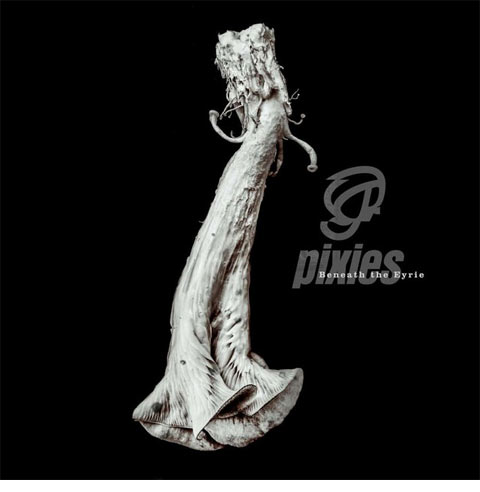How many subsequent releases after hiatus subjugate the lineage of a band? Is it one? Two? Three? Should they even reform and create new material anyway? What if it’s bad? Does it then dim the historical importance of a back catalogue?
These are questions some Pixies fans, including myself, have asked since the release of “Bam Thwak” in 2004 and the subsequent rumblings that became Indie Cindy in 2014. That earned itself positive reviews – a distinct lack of Kim Deal didn’t make it feel quite like the long-awaited new Pixies stuff fans wanted.
But there is a tribe who felt that anything new would be to the detriment of the iconic works Messrs Francis et al had unleashed 26 years before (Surfer Rosa). As if to preserve all that is great about the band we can’t allow them to make music again. Which I get; no one wants to see their legacy sullied.
There is a section of people who think they did that already with the release of 1991’s Tromp Le Monde. Admittedly, it’s pretty hard to follow up Doolittle, if we’re being honest (spoiler alert: it’s nigh on perfect.)
But here we are in 2019, faced with the advent of a third Pixies album since their reunification (and it was very much a reunification, given the historical dramas within the band): Beneath The Eyrie, working once again with producer Tom Dalgety who helmed the lukewarmly received Head Carrier from the band two years ago.
We’ve already been graced with two singles, “On Graveyard Hill” very much the formula Pixies “invented” (loud quiet loud, you know, like the documentary or everything band shortly afterwards), but with that overt polish in the master that perhaps is the reason not everyone like Dalgety’s work. We demand our Pixies records to have that sandpapered quality, damn it.
“Catfish Kate” was a welcome release though, as it is a reminder of those spaghetti western moments the band have fostered throughout their time. Don’t believe me? Go back to Bossanova and take a listen to “The Happening.” Are you getting that reference a little more now?
That may be where some of the problems lie with Beneath The Eyrie – that the production value is a little too polished. Some of the beauty of the prior releases, even Indie Cindy at points, was the grimy, almost grindhouse production of the albums. Maybe that, however, is our nostalgia playing tricks on us, given that at the time that was the best possible production value music had.
Because songwriting wise, Beneath The Eyrie has a lot of discordance that led us to fall in love with the band. The album’s opener, “In The Arms of Mrs. Mark of Cain” has those swells from Joey Santiago’s guitar and Paz Lenchantin may not be our beloved Kim, but her bass work once again follows that certain Pixies formula.
Truth be told, the opening track hits all the tropes the band have crafted throughout their career. Discordant rhythm guitar? Check. Intertwined, duelling vocals? Check. Esoteric biblical references many of us will have to look up? Big check.
Yeah, it’s a formula. Does that make it formulaic? A little – but it’s a winning formula. It’s ours that we have loved for years, and when it changes our attention is commanded. “This Is My Fate” does that at an early point in the album and in doing so makes us enjoy the standard-issue Pixies tracks even more.
It’s as if Dalgety also understands some of the disappointment that came with Head Carrier; at the band’s strongest points, and there is a lot of them on this album, it sounds like he’s deliberately changed the production value and made it a little less crisp. “Long Rider”, which is certainly my highlight from the album, is sludgier in execution, and suddenly you find yourself thinking you’re listening to 4AD era Pixies.
Beneath The Eyrie is without question the strongest of the three albums Pixies have released since their return. Francis seems content with going back to what led to the band’s immense popularity more often than not with the album. Yes, there are some questionable moments, however, the issue is what era Pixies you were a fan of.
Nothing will ever reach the heights of Doolittle, and to try and compare every subsequent release from the band is an exercise in futility. It sits somewhere between Bossanova and Trompe Le Monde in terms of songwriting, with even elements of Frank Black solo work. No surprises with that comparison.
Saying “this is as good as it will get” for modern Pixies releases is an utter disservice to the band; there are going to be some songs off this album that will enter into the band’s almost biblical folklore. Trust me.














No Comment